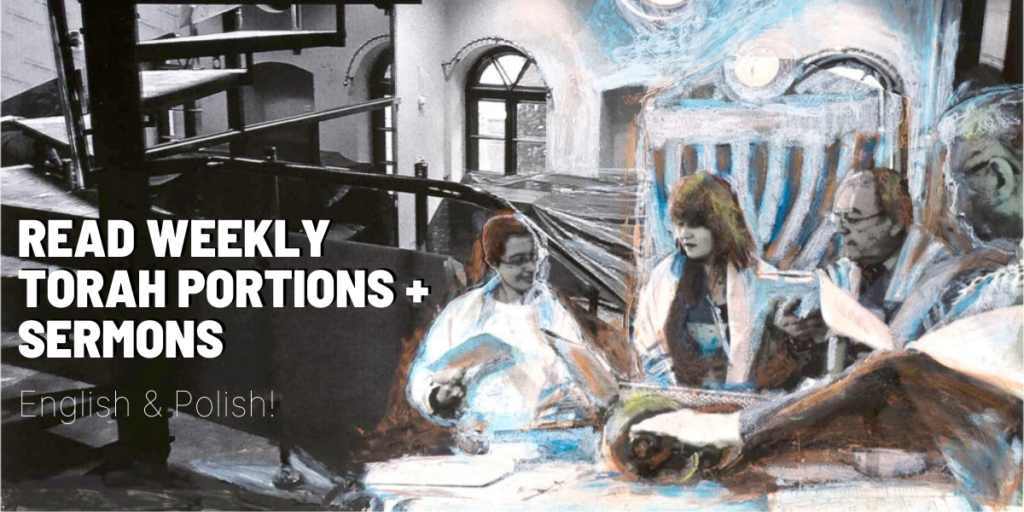Thoughts on Parashat Masei

Menachem Mirski
[maxbutton id=”6″ url=”https://polishjewsreviving.org/pragnienie-sprawiedliwosci-ktore-oslepia/” ] Masei (“Travels”), typically read together with the preceding parasha ‘Matot’, is the final Torah portion in the Book of Numbers. It opens with a recollection of the places where the Israelites encamped in the desert; later God commands the Israelites to abide by the laws of the Torah upon conquering the promised land and to destroy idolatry in the Land of Israel. This week’s parasha also outlines Israel’s boundaries and presents detailed laws regarding the cities of refuge for accidental killers:
[perfectpullquote align=”full” bordertop=”false” cite=”” link=”” color=”” class=”” size=””]Speak to the Israelite people and say to them: When you cross the Jordan into the land of Canaan, you shall provide yourselves with places to serve you as cities of refuge to which [a man] who has killed someone — who has slain a person unintentionally — may flee. The cities shall serve you as a refuge from the avenger, so that the killer may not die unless he has stood trial before the assembly. The towns that you thus assign shall be six cities of refuge in all. Three cities shall be designated beyond the Jordan, and the other three shall be designated in the land of Canaan: they shall serve as cities of refuge. These six cities shall serve the Israelites and the resident aliens among them for refuge, so that any man who slays a person unintentionally may flee there. (Numbers 35:10-15)[/perfectpullquote]
The rest of the laws on this issue clarify some important details like the distinction between unintentional killing and murder, as well as the role of the avenger.
The 19th century American clergyman and writer Henry Clay Trumbull argued that the avenger (hebr. goel ha’dam) was responsible for securing for the victim’s family an equivalent of their loss of blood — the loss of life — by other blood, or by an agreed-upon payment for its value: “His mission was not vengeance, but equity. He was not an avenger, but a redeemer, a restorer, a balancer”. This explanation is in line with the meaning of the Hebrew word goel, which means redeemer. In addition, the law enforcement of the early Biblical times was usually private in its character: typically the local patriarch was both the family/tribe leader as well as the prosecutor and the judge, thus being the one who administered and enforced justice. The biblical law reckoned with both of these traditions and at the same time pushed for their modification. Therefore, the Torah has always insisted that only the person involved in the killing was to be held responsible, as well as on putting the enforcement of the law into the public domain. The privileges of the goel were so firmly rooted among the people that the provisions for the cities of refuge should be looked upon as a gradual shift from private to public law enforcement. In fact, the Torah still granted the avenger the right to kill when his victim left the city of refuge (Numbers 35:27).
The slaying of a human being, even if it occurs without evil intent, is always an injury, a wound to the community. The institution of sanctuary cities (hebr. arei miklat) had three basic purposes: it was a protective measure, to give everyone the opportunity to cool down their emotions. It also served as punishment for the accidental killer, because exile constituted a form of social death. The third but not less important purpose was to contain and isolate the sin that had been committed, for killing was understood to contaminate both the community and the Land (Numbers 35:32-34).
The accidental killers could leave their refugee cities only after the death of the high priest. This procedure had both a practical meaning – as a rule, it set a sufficiently long period of social isolation (though obviously not always), as well as a theological one – ultimately only (someone’s) death could redeem this sin and here the death of the high priest served as expiation:
[perfectpullquote align=”full” bordertop=”false” cite=”” link=”” color=”” class=”” size=””]For the high priest atones on behalf of Israel, and this incident happened during his lifetime. (Ibn Ezra on Numbers 35:25)[/perfectpullquote]
Similarly, Talmud argues that the death of the high priest formed an atonement (Makkot 11a) as the death of all pious individuals counted as an atonement (Yoma 38b; Moed Katan 28a). Maimonides argued that the death of the high priest was simply an event so shockingly upsetting to the Israelites that they dropped all thoughts of vengeance (The Guide for the Perplexed III:40). When it comes to the blood avenger, later rabbinic tradition ascribed to him role performed in modern times by a prosecuting attorney, who pleads on behalf of the victim the case against the criminal and therefore is responsible for bringing the offender to court, finding evidence against him, presenting the case to the court, and collecting damages from the offender.
One of the lessons we can draw from these considerations may be that we should keep a proper balance regarding various injustices done in the past, to us, to our people or country. Time is a measure of the variability of all things; reality is constantly renewing itself, bringing new things, both good and bad, both justice and injustice. However legitimate it is to demand justice, we should be careful not to fixate on issues that were once important, but became not so important with time. This kind of fixation can obscure the current problems facing the world, rendering us incapable of properly perceiving the reality around us, including new problems and injustices. Any anger, even the justified and well-founded one, can cloud our senses and our reason. Peace of mind seems to always be the right answer; it is always better to perceive and react to the world with a calm mind than through the prism of various emotions over which we often have no complete control.
Shabbat shalom
















Leave a Reply